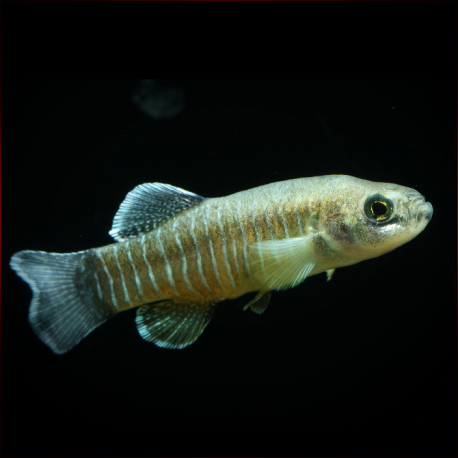상품설명
Datasheet
| 최소 탱크 크기 | 60 litres / 15.85 US gallons |
| 최대 크기 | 3.5cm / 1.38inches |
| 온도 | 8°C / 46.40°F - 32°C / 89.60°F |
| 경도 | 10.03dgH / 179ppm - 30.03dgH / 536ppm |
| pH | 7.0-8.5 |
General Description
Aphanius Arakensis, also known as the Arak Tooth Carp, is a species from the Cyprinodontidae family, classified under Cyprinodontiformes. It can be easily distinguished from other members of the genus by specific characteristics such as anal-fin rays, lateral line scales, and gill rakers. Although not particularly colorful, these fish exhibit intriguing behavior and continuous activity, making them captivating aquarium inhabitants. With a current population of 22 species and subspecies, Aphanius are descendants of a common ancestor once distributed around the periphery of the former Tethys Sea.
Aquarium Setup
For maintaining Aphanius Arakensis, a relatively simple aquarium set-up is suitable. Providing numerous broken lines of sight and a proper medium for egg deposition is essential. During the spawning season, female and subdominant males should have spaces for solace away from aggressive alpha males. The tank can be filled with acrylic wool mops and filamentous algae, alongside fine-leaved plants. It is recommended to add marine salt to the water and maintain a minimum ratio of 1-3 g/L. Filtration need not be excessively strong, and exposure to natural sunlight for a few hours daily can enhance the fish's coloration and condition.
Behaviour
Aphanius Arakensis displays aggressive spawning behavior, making them unsuitable for community aquariums. It is recommended to keep them in a group with a ratio of two or three females to each male. These fish exhibit a reproductive strategy adapted to unstable environments, with a high reproductive effort. Males establish temporary territories, defending them against rivals while attempting to entice females to spawn. Dominant individuals display intensified coloration, and females deposit eggs continuously from April to November.
Feeding and Diet
Aphanius species primarily feed on small aquatic crustaceans, worms, insect larvae, and zooplankton, with occasional plant material. In captivity, they can be fed dried foods but should also be offered live or frozen fare like Artemia, Daphnia, or bloodworms, especially during the reproductive months of spring and summer. Ensuring a balanced diet is crucial for their health and reproduction.
Reproduction & Dimorphism
Captive reproduction of A. arakensis is relatively straightforward with proper tank conditions. They are fractional spawners, with females laying eggs continuously attached to surfaces with small filaments. Male and female fish exhibit sexual dimorphism, with males displaying silvery vertical bars on the body and fins, while females are larger with dark flank markings and whitish fins. The incubation period for eggs ranges from 7-14 days, with fry becoming free-swimming and consuming small live foods immediately.
Habitat and Distribution
Endemic to a small portion of the Namak Lake basin in northern Iran, Aphanius Arakensis is restricted to natural springs near the city of Arak. Their habitat comprises shallow ponds with muddy and gravel substrates, lacking aquatic plants. The water temperature in their habitat ranges from 23°C and is adversely affected by anthropogenic pollution. Besides A. arakensis, other endemic fish species in the Namak basin include Barbus miliaris, Capoeta buhsei, and Paracobitis iranica.

